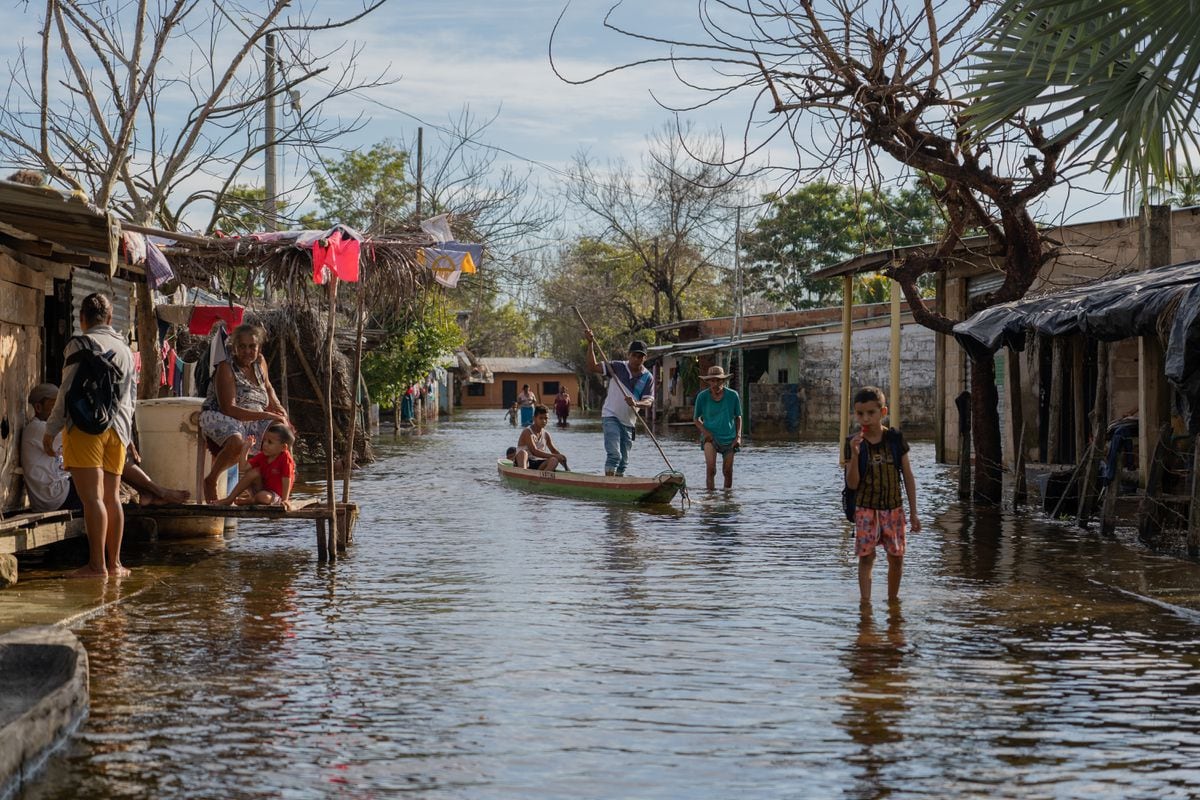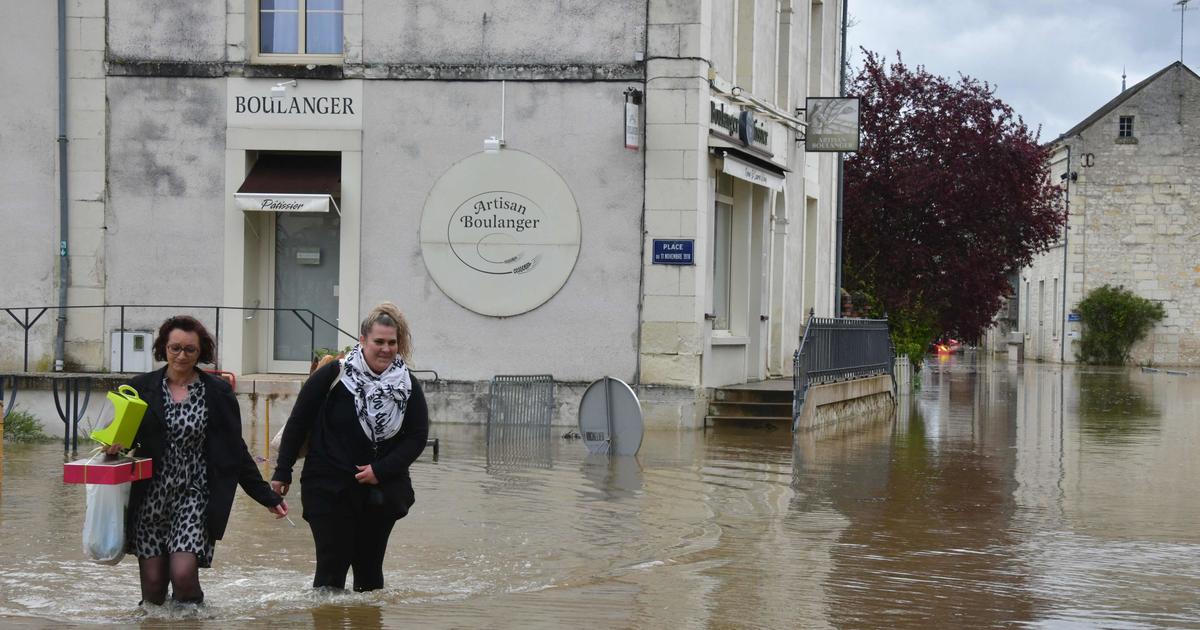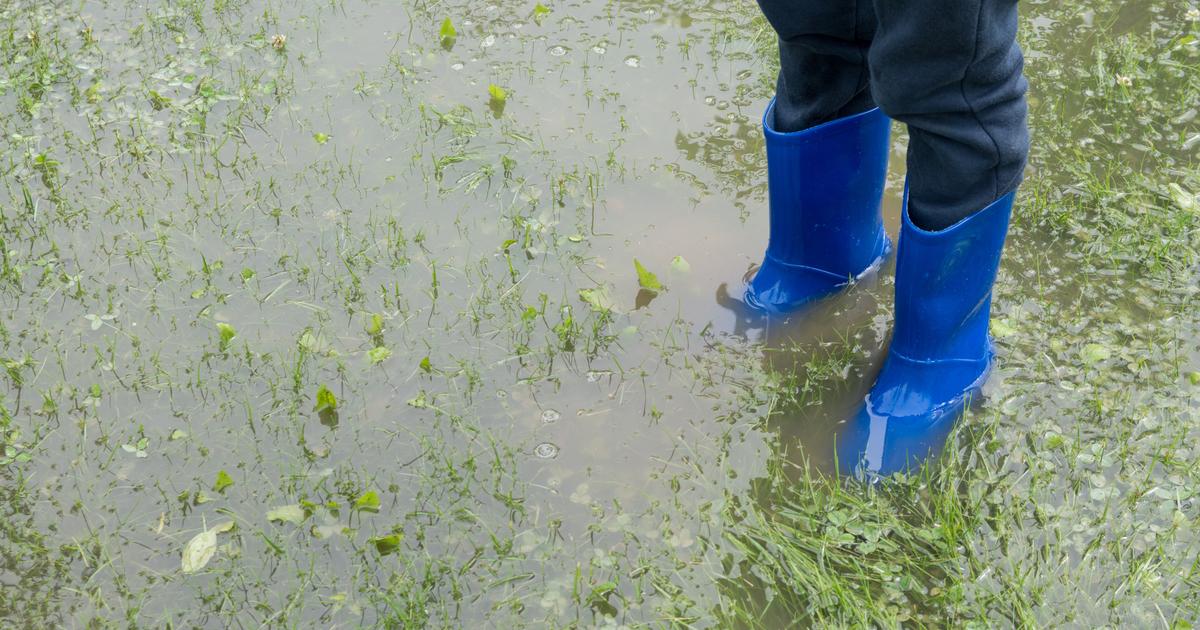"Welcome to the country of waters," says Isidro Álvarez, an environmentalist, high school teacher and tour guide, a 49-year-old man who has lived all his life in the small rural municipality called Sucre, in the department of Sucre, which some call " The Venice of the Caribbean”.
Álvarez wears long black rubber boots in the urban area where the streets are flooded and which can only be reached by
chalupa
— a small motor boat.
“If it rains a lot throughout the country, we are the most fragile, we 'bunch' all the water,” he says as he walks through ankle-deep puddles.
And this year it has rained a lot, more than in the last 40 years, according to President Gustavo Petro.
Sucre is one of 11 municipalities that make up La Mojana, an area that has become an epicenter of attention to deal with floods derived from the rainy season.
Three of the country's major rivers—the Magdalena, the San Jorge, and the Cauca—come together in this area, and for this reason it has always been a flood zone.
But these have become more dramatic, not only because of the extreme rainfall, but also because of the reduced space that rivers have to flow, a reduction caused by various human interventions of more than a century.
There are two opposing visions to solve the problem of La Mojana, and Álvarez's is one of them.
“We must not try to govern the water, we must try to harmonize with the water,” says this activist and co-founder of a foundation called Pata de Agua.
He doesn't want more engineering of dikes, walls, or what he calls "grey technology."
He wants to look for other solutions, perhaps slower to adapt to climate change, but more respectful of the powerful riverbed.
Isidro Álvarez, environmentalist, on a canoe trip through one of the swamps in the municipality of Sucre, on November 21, 2022.Juan Carlos Zapata
Tourists go every week to visit Álvarez because his town was also where Gabriel García Márquez's father lived, a place that inspired Nobel books such as
El Coronel No Tiene quien le Escriba
and
La Mala Hora
, and where Gabo met his wife, Mercedes Barcha.
“This is the House of Santiago Nassar,” says Álvarez, pointing to the plaque on an old structure in the center of town, as if the protagonist of
Crónica de una Muerte Anunciada
had left the book to try to save his life there (his real name was Cayetano Gentile, and was assassinated for the same reasons as Nassar).
Today the municipality seems to have come out of fiction, but not because Gabo's characters lived there: children go to school with water up to their knees, families go to market in canoes, men build 'tambos' in their houses (tall structures of wood) to sleep in a dry space when the house floods.
Álvarez, sitting in an old bar that inspired the story
In This Town There Are No Thieves
, says that an area like La Mojana has always lived with the rises and falls of the water: since pre-colonial times, when the Panzenúes ruled there, the indigenous people created a hydraulic system of channels and natural pipes that today is honored in Colombia drawn on the 20,000 peso bills.
“It is said that they designed it by looking at the shape of the fish bones,” says this calm-voiced professor who considers himself a member of an amphibian culture.
But since the beginning of the 20th century, La Mojana built other engineering systems that took less into account the rise and fall of the rivers.
Rather, they were built challenging the water to a duel, says Álvarez: retaining walls, dikes, or populated centers where homes would obviously be flooded.
The professor then gets in a red canoe to two neighborhoods, houses built by the government, next to a swamp, where the water rose up to two meters high in this rainy season.
“It didn't occur to them that this is the worst place to build,” he says.
A blond dog swims through the waters next to the canoe, another white one watches him anxiously, beating his tail from a balcony.
There is too much water between the two of us to go out and play.
Since he was born, Álvarez has lived through floods in 1975, 1984, 1988, 1991, 1996, 2001 and 2010. “The one in 2010 was the worst, it is the only time I remember that people started talking about leaving town to shelters, I thought the town was going to be left alone,” he says.
But no matter how much water there is, he is not willing to relocate, as the Petro government has proposed.
Sucre has withstood the storm but the underlying problem has not disappeared.
La Mojana is an example of how the consequences of climate change, such as extreme rainfall, are aggravated by the way modern societies have treated the rivers in which that rain flows.
“The river is not crazy, the crazy ones are us who have the river in an uproar,” says Álvarez.
The culprits, for him, are several
The municipality of Sucre, in the region known as La Mojana, in northern Colombia, on November 21, 2022.Juan Carlos Zapata
First there is mining in the municipality of Caucasia, before reaching La Mojana, which throws tons of earth, cyanide and mercury into the Nechí River, a tributary of the Cauca River.
Everything ends up at the bottom of the river, giving the water less room to follow its historical course.
Then there is cattle ranching, which felled trees through deforestation to absorb water or create natural barriers.
And then there is extensive agriculture, which also eroded soils and contributed to sedimentation in rivers.
The situation worsened in August of last year when the Cauca River, unable to follow its normal course, overflowed, breaking through an area to the south of La Mojana called Cara e' Gato and flooding the 11 municipalities.
“The river was defending itself, it was looking for a way out,” says Álvarez.
The government of Iván Duque then started the construction of a retaining wall to close off Cara e' Gato, the “grey technology”, which would cost some $1.4 billion pesos and which has been opposed not only by Álvarez but also by the new government.
“The worst way to handle climate disaster is to imprison the rivers,” Petro said then, when he was still a senator.
“We must develop the amphibian culture of the Caribbean trampled on by extensive cattle farming,” he added.
In a debate in Congress, the Minister of the Environment, Susana Muhamad, reinforced this idea: "Seeking to dry La Mojana is naive, what we need is to give space to water and for people to have a place to live in safe places."
The central argument is that a wall does not solve the problems that La Mojana has and eventually, due to the force of the Cauca River, it can be broken and the drama will continue.
Javier Pava, director of the National Unit for Disaster Risk Management, told EL PAÍS that the government wants to review again the studies for that retaining wall and also those of a CONPES project (of the Duque government, which was assigned 1.8 billions of pesos) to build other infrastructure works on the left bank of the Cauca River.
"Because I build a wall and tomorrow the river continues to rise, and then I have to raise the wall higher, but in the end, it becomes a risk issue for the populations and we don't want to build false security," says Pava.
Protecting the wetlands in the area, and the river bed, he adds, should also be a priority.
While they find a structural solution, the government has prioritized humanitarian aid, subsidies to farmers, and alliances with community pots so that the victims have food.
Álvarez, watching the sunset over the mirrors of water in the swamp, acknowledges that he is not an engineer and that he does not know how a new hydraulic system could be built in which water and citizens can live in harmony like the Panzenúes thousands of years ago. year.
"Maybe we have to recover green and blue barriers (trees or pipes)," he says.
“But not walls.
We have already covered the river's natural routes, we have to try something else”.
The La Mojana region is the epicenter of the winter emergency that Colombia is experiencing.Juan Carlos Zapata
The emergency has no patience
"If we don't do something now, La Mojana is going to disappear, towns like Sucre are going to disappear," says alarmed Marco Tulio Uribe, a rancher, farmer, and leader of a group that has pressured the government to close it as soon as possible. , Face and 'Gato.
Uribe is a civil engineer, heir to four generations of farmers in the area, and represents the opposite vision to that of Álvarez.
“The government is saying that the dikes are useless when, man, they are solutions that have been implemented throughout the world,” he adds.
Uribe is speaking inside his white pickup truck, further south in Sucre, on the only highway in the area that connects the municipalities of Majagual and San Marcos, a road where hundreds of day laborers, who lost their homes in the floods, have lived for months in plastic cabins.
“I left my house when the water reached me above the height of my boots,” says a 78-year-old day laborer there, José Miguel Arrieta, from the village of La Sierpe.
He adds that people bathe in the same places where they dump their waste, and a friend tells him that he has noticed more children with skin fungus from standing water.
What do they want?
“Let the government close Cara e' Gato”, the two reply.
“The government is saying that there are people who do not agree with the works and that is a lie;
the government is saying that this is a wetland area that has dried up, and that is also a lie," says the businessman Uribe emphatically, while the car stops to look at huge white sacks that weigh tons and that, in a place called "El Canal del Cura" covered an old artificial route of the Cauca River.
An engineering solution that Uribe shows as an example of success.
When one returns to the history of La Mojana, this businessman does not start with the Panzenués but with the arrival of Columbus and the Spanish in the Caribbean, who saw in this area the ideal space to travel to the interior of the country through the rivers.
He agrees that mining in Caucasia, since the early 1910s, has been dumping tons of sediment that slowed the flow of the Cauca.
“Of course you have to accept that the river no longer has the same depth and that it has been leaving cyanide and industrial waste here,” he says as he contemplates the speed with which the river moves.
On the other hand, he does not consider cattle ranching and extensive agriculture in the region a threat to the sustainability of the area.
Marco Tulio Uribe, a rancher from the La Mojana region, on the Majagual - San Marcos road, on November 22, 2022.Juan Carlos Zapata
“Our great concern is the misinformation that exists at a high level, such as Senator Isabel Zuleta, supposedly an environmentalist, who says that the Cauca River should not be locked up,” says Uribe annoyed.
"She's not saying you have to rebuild it to her 1910 version of hers, for example, with dredging programs."
Uribe does not understand the region as that of an amphibious culture, as Álvarez does.
"This area, which would be Alta Mojana, was not flooded like that," he insists.
He doesn't even see it as an area that privileged ranchers over day laborers, as President Petro says.
Uribe drives his truck to the home of rancher Darinel Monterrosa, a 54-year-old businessman with a farm halfway down the road.
This year Monterrosa has not been able to plant rice, watermelon, or melon, and he calculates that some 68 of his cows have died because they live with water between their legs.
As he speaks, the corpse of one of those cows is being eaten by a dozen pimps.
“I used to get 300 liters of milk a day, now I'm only getting about 20;
most of my animals are dead,” says Monterrosa.
Still, like other farmers in the area, he doesn't want to relocate, he wants the government to close Cara e 'Gato.
His friend, Marco Tulio Uribe, like Álvarez, says that no one in the area is willing to move.
“They talk about moving people, but are we going to end up relocating all of Colombia because of the rains and we are going to go live on Mars with Elon Musk?” He says angrily.
Last Wednesday, the ranchers and other agricultural unions were ready to carry out a strike at three points along the Troncal del Caribe, and Uribe calculated that they had organized some 3,000 people to protest.
Faced with pressure, the government sought a last-minute meeting and, in less than 24 hours, reached a timid pact with the Strike Committee.
The parties agreed that a group of military engineers will study the area to, in a month, give a solution on Cara e' Gato.
They also agreed that the government will review CONPES to rethink how to protect the population from flooding.
Before the year is out, officials must offer a new road map to protect victims, businesses, and wetlands.
"The strike was not canceled, but rather suspended," says Uribe.
"I think that the government realized that this was not a
rooster's bottle
, that they cannot have that attitude in the face of such a tragedy, and now it is time to see what solutions they bring for Cara e' Gato and what adjustments they want to make to CONPES."
Flooded neighborhood of houses in the municipality of Sucre, north of Colombia, on November 21, 2022.Juan Carlos Zapata
La Mojana will soon know which of the two visions will prevail in the government of Gustavo Petro.
There is the side that demands faster solutions and she needs to see the military engineers stop the flood as soon as possible.
And there is the side that would like to see structural changes that do not imply moving the river from one side to the other, but rather rethinking the use of soil and water in the entire region.
Either path, in any case, wants a flood not to destroy an entire town.
And meanwhile it rains non-stop in the country of
One Hundred Years of Solitude
, that novel by García Márquez in which it rained for four years, eleven months and two days.
In the face of that storm, Macondo was left in ruins, the banana company left the town, the streets were bogged down, the furniture in the houses was torn to pieces, and only the skeletons of the animals remained.
The skin of the inhabitants turned green and Aureliano Segundo thought that in Macondo everyone "was waiting for it to clear up to die."
The inhabitants of La Mojana hope for a better ending.
Because even in Macondo, one day, it also cleared.
Subscribe here
to the EL PAÍS newsletter on Colombia and receive all the latest information on the country.









